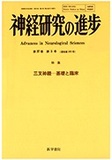Japanese
English
- 有料閲覧
- Abstract 文献概要
- 1ページ目 Look Inside
はじめに
三叉神経痛という人体のなかでもっとも激しい痛みに対し長年いろいろな外科的治療法が試みられてきた。初期の三叉神経末梢枝の捻除,切除術はあまり効果的でなく,ついでSpiller-Frazierらによる中頭蓋窩での,さらにDandyによる後頭蓋窩でのrhizotomyではそれなりの効果をあげた。その後1962年頃からGardnerら,および1967年頃からJannettaらは,三叉神経から圧迫血管を遊離して神経の減圧を計ることにより三叉神経痛を治療するという手術法を発展せしめた。この方法の特徴は,三叉神経痛発現の主たる原因である血管による神経圧迫を除去し,神経にdestructiveな変化を与えないため術後顔面の知覚を障害することが少なく,かつ半永久的に痛みを消失せしめるという点で画期的なものである。
A large number of surgical options had been available for the treatment of medically intractable tic douloureux, since the pathophysiological mechanism of this symptom had been obscure for long time until Gardner clarified the etiology as a continuous compression of the nerve by vessels at the root entry zone. Microvascular decompression surgery for tic douloureux, which is popularized by Jannetta has now won wide acceptance and has proved efficacious and safe in experienced surgeons hands.
Microvascular decompression surgery (MVD) is performed via a small craniectomy (ca 2.0×2.5 cm in diameter) in the retromastoid area under general anesthesia. After dural opening, the cerebro-spinal fluid is evacuated by a gentle traction of cerebellum, and once the cerebellum becomes slack, the root entry zone of the 5th cranial nerve is explored with minimum sacrifice of superior petrosal veins. Arachnoid membrane around the trigeminal nerve is divided and cut after identifying the neural and vascular structures in the subarachnoid space. Offending vessels, such as superior cerebellar artery, anterior inferior cerebellar artery and ectated and redundant vertebrobasilar artery which compress the Obersteiner-Redlich zone of the nerve are repositioned. By interposing a prosthesis between the offending vessel and the brainstem or by adhering the loop of the offending artery to the nearby duraor tentorium, the trigeminal nerve is decompressed. After repositioning the offending vessel, thick arachnoid membranes around the nerve, if there are any, are also dissected until the long axis of the nerve becomes straight and free. During the procedure, meticulous care should be taken not to cause any damage to the 8th cranial nerve which is lying in the front of the operative field. Auditory Brainstem Response is also monitored during MVD. Since this operative procedure is a neurosurgical management of benign conditions such as tic douloureux, it must be not only effective in relieving symptoms, but also it must preserve functioning neural structures without causing any dysfunction which has not existed preoperatively.

Copyright © 1993, Igaku-Shoin Ltd. All rights reserved.


